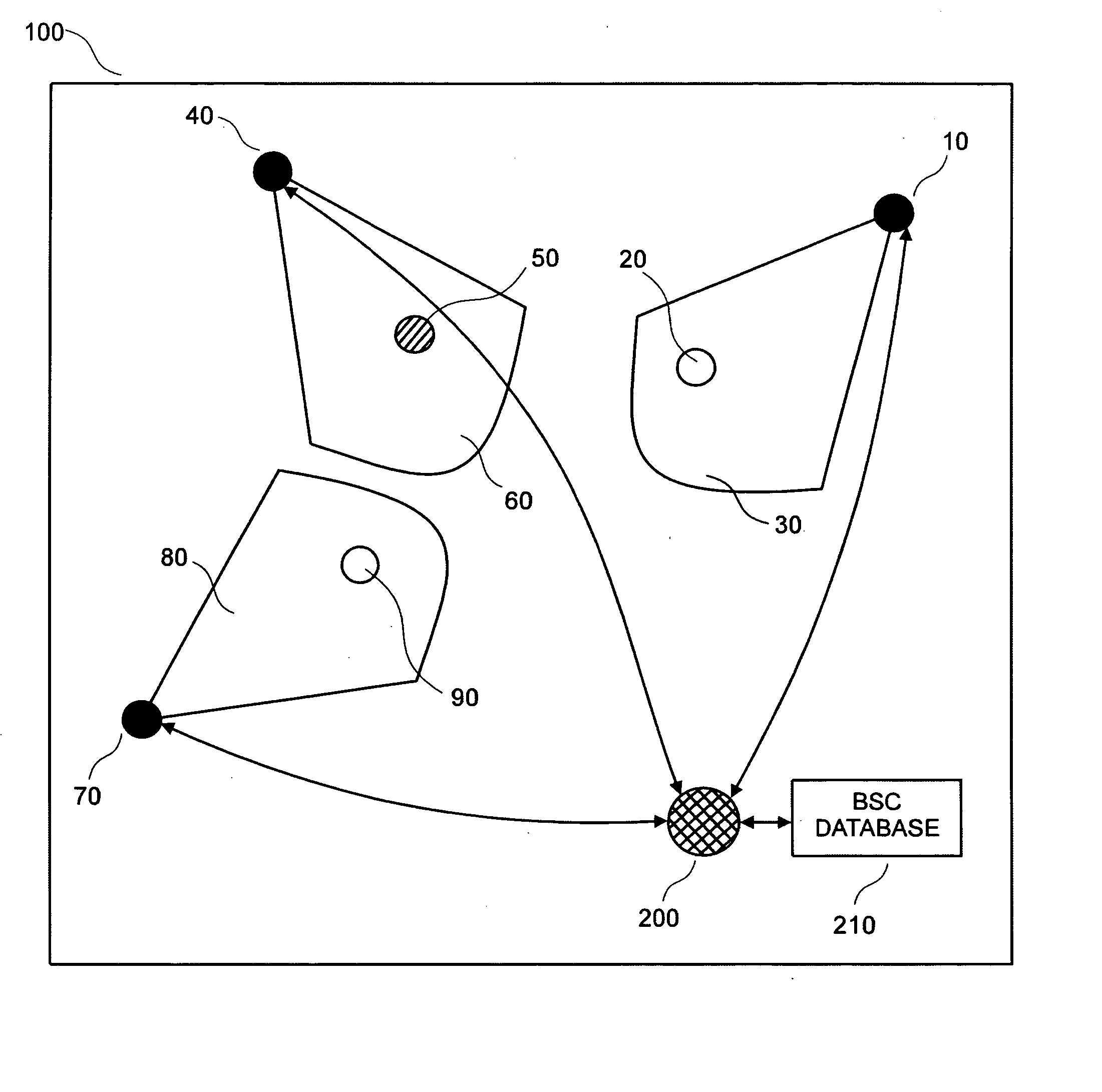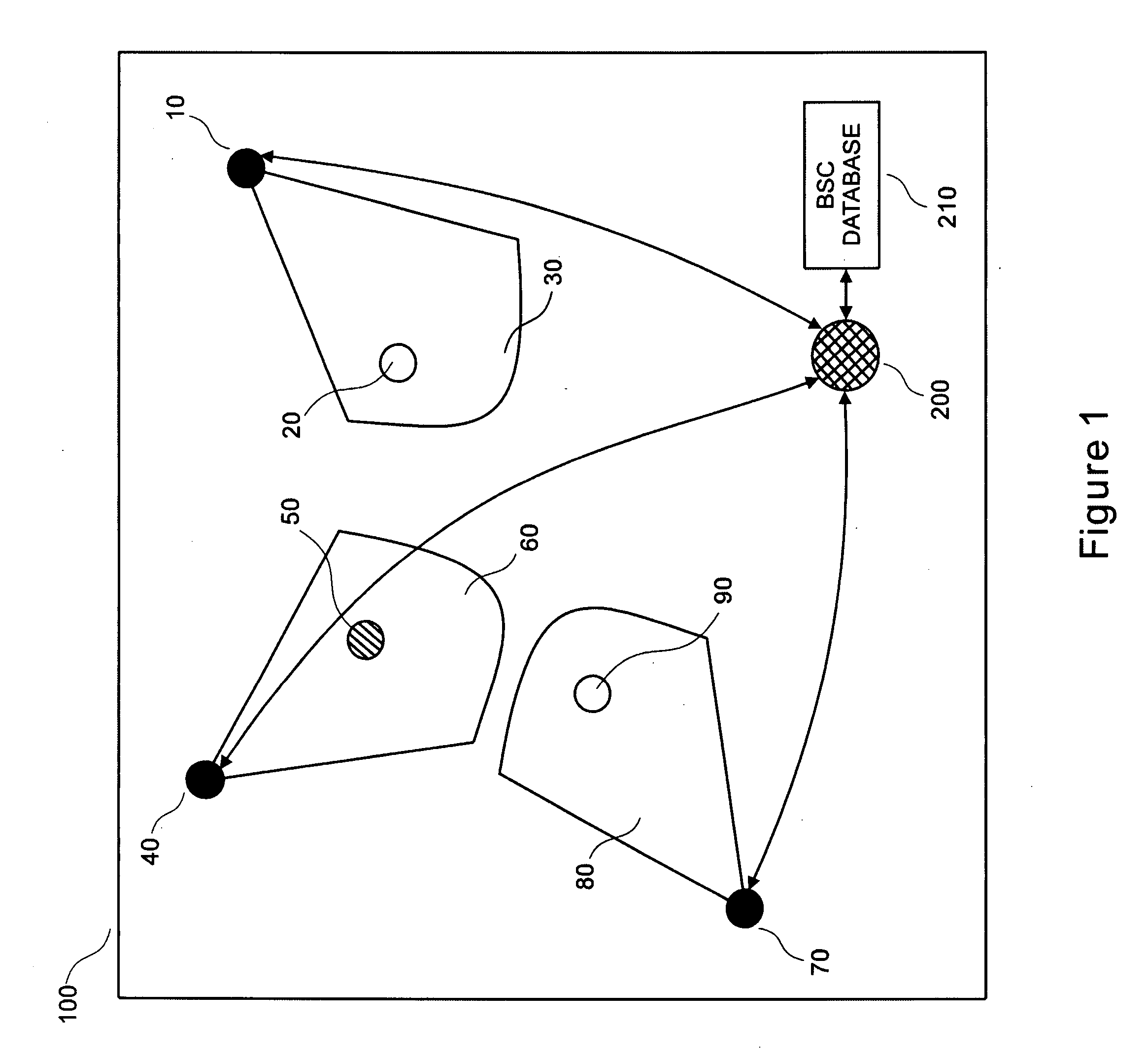Adaptive null streering for frequency hopping networks
a frequency hopping network and null steering technology, applied in the field of wireless networks, can solve the problems of significant quality degradation or even dropped calls, reduce the probability of occurrence, and increase the average performance of the system
- Summary
- Abstract
- Description
- Claims
- Application Information
AI Technical Summary
Problems solved by technology
Method used
Image
Examples
second embodiment
[0059] A second embodiment will now be described in which the present invention may be implemented, in the relatively frequent case where only a limited subset of cells in a network are serviced by a smart antenna system.
[0060] This may be the case, for example, where subscriber demand in a particular cell, without a smart antenna, outstrips available capability so that a smart antenna is introduced only into that cell. Usually, in such a case, the replaced conventional antenna will be redeployed in a new cell, which may not have, at least initially, the same subscriber demand as the first cell.
[0061] This scenario may also arise when a network operator is first evaluating a new smart antenna proposal. It is more likely that the evaluation would involve a solitary or a few cells in the network at first instance.
first embodiment
[0062] However the scenario arises, it is manifest that the present invention would not be applicable, because only a small subset (perhaps only one) of cells would be serviced by a smart antenna system and thus have the capability to generate a DoA and / or ToA estimate.
[0063] Even if the network were fully populated with smart antenna systems, it is conceivable that such cells are not connected to a BSC. If so, again the first embodiment would not be applicable and manifestly, the ability to provide radio location would not be available.
[0064] Nevertheless, despite the absence of other smart antenna systems in the network, or even a BSC, for the particular cell of interest, which is serviced by a smart antenna system, it would be desirable to be able to provide null steering capability even in the presence of frequency hopping throughout the network.
[0065] The second embodiment of the present invention provides such capability while only imposing a nominal constraint on the networ...
PUM
 Login to View More
Login to View More Abstract
Description
Claims
Application Information
 Login to View More
Login to View More - R&D
- Intellectual Property
- Life Sciences
- Materials
- Tech Scout
- Unparalleled Data Quality
- Higher Quality Content
- 60% Fewer Hallucinations
Browse by: Latest US Patents, China's latest patents, Technical Efficacy Thesaurus, Application Domain, Technology Topic, Popular Technical Reports.
© 2025 PatSnap. All rights reserved.Legal|Privacy policy|Modern Slavery Act Transparency Statement|Sitemap|About US| Contact US: help@patsnap.com



